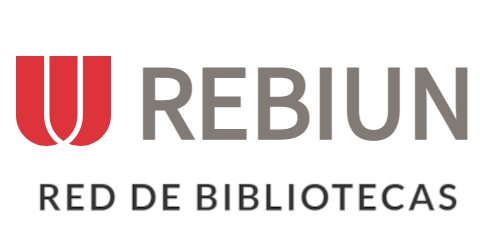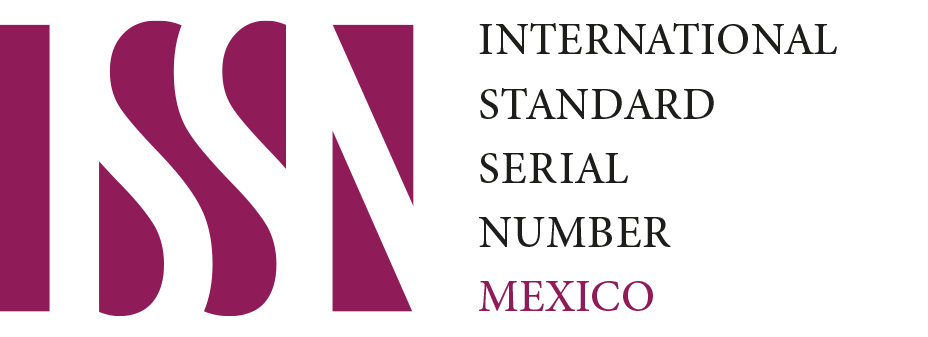Comportamientos de ciudadanía organizacional como antecedente de la cultura, compromiso y satisfacción laboral en empresas de servicio
Resumen
Es común que las organizaciones se enfrentan a cambios desafiantes, ante esto el comportamiento ciudadano de las personas puede afectar o contribuir en el éxito de la firma. Es imperante que los administradores pongan atención a ello y consideren que un entorno apropiado contribuirá considerablemente en la participación y comportamiento de las personas. El objetivo fue analizar si los comportamientos de ciudadanía organizacional influyen sobre la cultura adhocrática, el compromiso organizacional y la satisfacción laboral de los empleados que laboran en empresas de servicio de la frontera norte y realizan un trabajo de forma directa con el cliente. El estudio fue de tipo no experimental, transeccional, correlacional-causal y con un enfoque cuantitativo, se consideró una muestra por conveniencia de 180 empleados. Los datos se obtuvieron por medio de una encuesta administrada directamente a cada participante. Los datos obtenidos fueron examinados mediante mínimos cuadrados parcializados [PLS]. El modelo se corrió con el software SmartPLS. Los resultados demuestran que las relaciones planteadas son estadísticamente significativas: Los CCO impactan de forma directa a la cultura adhocrática, compromiso organizacional y satisfacción laboral, y también de forma indirecta con la satisfacción laboral a través de la mediación de la cultura adhocráticas y compromiso organizacional.
Descargas
Citas
Ahad, R., Mustafa, M. Z., Mohamad, S., Abdullah, N. H. S., & Nordin, M. N. (2021). Work Attitude, Organizational Commitment and Emotional Intelligence of Malaysian Vocational College Teachers. Journal of Technical Education and Training, 13(1), 15-21. https://doi.org/10.30880/jtet.2021.13.01.002
AlKahtani, N., Iqbal, S., Sohail, M., Sheraz, F., Jahan, S., Anwar, B., & Haider, S. (2021). Impact of employee empowerment on organizational commitment through job satisfaction in four and five stars hotel industry. Management Science Letters, 11(3), 813-822. https://doi.org/10.5267/j.msl.2020.10.022
Allen, N. J., & Meyer, J. P. (1990). The measurement and antecedents of affective, continuance and normative commitment to the organization. Journal of occupational psychology, 63(1), 1-18. https://doi.org/10.1111/j.2044-8325.1990.tb00506.x
Amini, N., Rezaei, T., & Tavakoli, M. (2018). The study of mediator role of job satisfaction in organizational justice and citizenship behavior relationship in one of the Shiraz factories. UCT Journal of Social Sciences and Humanities Research, 6(04), 79-84. https://doi.org/10.24200/jsshr.vol6iss04pp79-84
Ayala, P. (2014). Cultura Organizacional e Innovación. Revista Electrónica Gestión de las Personas y Tecnología, 7(19), 44-55.
Aziri, B. (2011). Job Satisfaction: A Literature Review. Management Research & Practice, 3(4).
Barraza, A. (2008). Compromiso organizacional de los docentes: un estudio exploratorio. Avances en supervisión educativa: Revista de la Asociación de Inspectores de Educación de España(8), 20.
Cameron, K. S., & Quinn, R. E. (2011). Diagnosing and changing organizational culture: Based on the competing values framework: John Wiley & Sons.
Casado, J. M. C. (2018). Supermercados en México: expansión y espacios de inserción. Estudios Geográficos, 79(284), 167-190.
Castillo, R. D. C. (2012). Desarrollo del capital humano en las organizaciones (Primera ed.). México: RED TERCER MILENIO SC.
Chin, W. (1998). Issues and Opinion on Structural Equation Modeling. MIS Quarterly, 22(1), 7-16.
Coyle‐Shapiro, J. A. M. (2002). A psychological contract perspective on organizational citizenship behavior. Journal of Organizational Behavior: The International Journal of Industrial, Occupational and Organizational Psychology and Behavior, 23(8), 927-946. https://doi.org/10.1002/job.173
Dimitrova, S., & Marín, L. (2006). El concepto de cultura de las organizaciones: Centralidad actual y evolución. Revista internacional de organizaciones, 65-76.
Engelen, A., Flatten, T. C., Thalmann, J., & Brettel, M. (2014). The Effect of Organizational Culture on Entrepreneurial Orientation: A Comparison between Germany and Thailand. Journal of Small Business Management, 52(4), 732-752. https://doi.org/10.1111/jsbm.12052
Fornell, C., & Bookstein, F. L. (1982). Two Structural Equation Models: LISREL and PLS Applied to Consumer Exit-Voice Theory. Journal of Marketing Research, 19(4), 440-452. https://doi.org/10.1177/002224378201900406
Fornell, C., & Larcker, D. F. (1981). Evaluating Structural Equation Models with Unobservable Variables and Measurement Error. Journal of Marketing Research, 18(1), 39-50. https://doi.org/10.1177/002224378101800104
Gastélum, R. G. (2000). Comunicación y cultura organizacional en empresas chinas y japonesas: Juan Carlos Martínez Coll.
Gefen, D., & Straub, D. (2005). A Practical Guide to Factorial Validity Using PLS-Graph: Tutorial and Annotated Example. Communications of the Association for Information Systems, 16, 91-109.
Hair, J. F., Anderson, R. F., Tatham, R. L., & Black, W. C. (1999). Análisis Multivariante (5ta Edición ed.). Madrid: Prentice Hall Iberia.
Henseler, J., Ringle, C. M., & Sarstedt, M. (2015). A new criterion for assessing discriminant validity in variance-based structural equation modeling. Journal of the Academy of Marketing Science, 43(1), 115-135. https://doi.org/10.1007/s11747-014-0403-8
Lambert, S. J. (2000). Added benefits: The link between work-life benefits and organizational citizenship behavior. Academy of management Journal, 43(5), 801-815.
Lavy, S., & Littman-Ovadia, H. (2016). My Better Self: Using Strengths at Work and Work Productivity, Organizational Citizenship Behavior, and Satisfaction. Journal of Career Development, 44(2), 95-109. https://doi.org/10.1177/0894845316634056
Lee, K., & Allen, N. J. (2002). Organizational citizenship behavior and workplace deviance: The role of affect and cognitions. Journal of applied psychology, 87(1), 131. https://doi.org/10.1037//0021-9010.87.1.131
Loan, L. (2020). The influence of organizational commitment on employees’ job performance: The mediating role of job satisfaction. Management Science Letters, 10(14), 3307-3312. doi: 10.5267/j.msl.2020.6.007
Lok, P., & Crawford, J. (2004). The effect of organisational culture and leadership style on job satisfaction and organisational commitment. Journal of Management Development, 23(4), 321-338. https://doi.org/10.1108/02621710410529785
Mappamiring, M., Akob, M., & Putra, A. H. P. K. (2020). What Millennial Workers Want? Turnover or Intention to Stay in Company. The Journal of Asian Finance, Economics, and Business, 7(5), 237-248. doi: https://doi.org/10.13106/JAFEB.2020.VOL7.NO5.237
Meliá, J., & Peiró, J. (1989). La medida de la satisfacción laboral en contextos organizacionales: El Cuestionario de Satisfacción S20/23. Psicologemas, 5(2), 59-74.
Meyer, J. P., & Allen, N. J. (1991). A Three-Component Conceptualization of Organizational Commitment. Human Resource Management, 1(1), 61-89. https://doi.org/10.1016/1053-4822(91)90011-Z
Meyer, J. P., Allen, N. J., & Smith, C. A. (1993). Commitment to organizations and occupations: Extension and test of a three-component conceptualization. Journal of applied psychology, 78(4), 538. https://doi.org/10.1037/0021-9010.78.4.538
Minsal, D., & Pérez, Y. (2007). Hacia una nueva cultura organizacional: la cultura del conocimiento. Acimed, 16(3), 0-0.
Montalbán, R. L. R., Soria, M. S., & Lugo, M. M. (2014). Justicia organizacional, engagement en el trabajo y comportamientos de ciudadanía organizacional: una combinación ganadora. Universitas Psychologica, 13(3), 15-28. https://doi.org/10.11144/Javeriana.UPSY13-3.joet
Mowday, R. T., Steers, R. M., & Porter, L. W. (1979). The Measurement of Organizational Commitment. Journal of Vocational Behavior 14, 224-247. https://doi.org/10.1016/0001-8791(79)90072-1
Novitasari, D., Asbari, M., Wijaya, M. R., & Yuwono, T. (2020). Effect of Organizational Justice on Organizational Commitment: Mediating Role of Intrinsic and Extrinsic Satisfaction. International Journal of Science and Management Studies (IJSMS), 3(3), 96-112.
Organ, D. W. (1988). Organizational citizenship behavior: The good soldier syndrome: Lexington Books/DC Heath and Com.
Organ, D. W. (1997). Organizational citizenship behavior: It's construct clean-up time. Human performance, 10(2), 85-97.
Ortiz, L. (2018). La industria cinematográfica en México, tan fuerte como la del hierro o el acero, Expansión. Retrieved from https://expansion.mx/vida-arte/2019/06/14/la-industria-cinematografica-en-mexico-tan-fuerte-como-la-del-hierro-o-el-acero
Paais, M., & Pattiruhu, J. R. (2020). Effect of motivation, leadership, and organizational culture on satisfaction and employee performance. The Journal of Asian Finance, Economics, and Business, 7(8), 577-588. https://doi.org/10.13106/JAFEB.2020.VOL7.NO8.577
Patrón-Cortés, R. M., & Canul, C. A. P. (2017). Compromiso organizacional de los trabajadores: estudio de una empresa refresquera ubicada en México. Revista Electrónica Sobre Cuerpos Académicos y Grupos de Investigación, 4(8).
Peña, M. C., Díaz, M., Chávez, A. G., & Sánchez, C. E. (2016). El Compromiso Organizacional Como Parte Del Comportamiento De Los Trabajadores De Las Pequeñas Empresas Revista internacional administracion & finanzas, 9(5), 95-105.
Polychroniou, P., & Trivellas, P. (2018). The impact of strong and balanced organizational cultures on firm performance. International Journal of Quality and Service Sciences, 10(1), 16-35. https://doi.org/10.1108/IJQSS-09-2016-0065
Rahmawati, R., & Tobing, D. (2019). The Role Of Transformational Leadership On Organizational Commitment And Job Satisfaction Of Tax Office Officers (KPP) In Banjarmasin. International Journal of Scientific & Technology Research, 8(7), 11-17.
Robbins, S., & Judge, T. (2009). Comportamiento organizacional. Decimotercera edición.
Sánchez, V. R., & Franco, F. d. J. M. (2019). Evaluación del compromiso organizacional de Servidores Públicos en México. Revista Arbitrada Interdisciplinaria Koinonía, 4(8), 166-189. http://dx.doi.org/10.35381/r.k.v4i8.263
Schein, E. H. (1986). What you need to know about organizational culture. Training & Development Journal, 40(1), 30-33.
Segredo, A. M. (2013). Clima organizacional en la gestión del cambio para el desarrollo de la organización. Revista cubana de salud pública, 39, 385-393.
Singh, S. K., & Singh, A. P. (2019). Interplay of organizational justice, psychological empowerment, organizational citizenship behavior, and job satisfaction in the context of circular economy. Management Decision. https://doi.org/10.1108/MD-09-2018-0966
Spector, P. E. (1985). Measurement of human service staff satisfaction: Development of the Job Satisfaction Survey. American journal of community psychology, 13(6), 693-713. https://doi.org/10.1007/BF00929796
Steckerl, V. (2011). Modelo explicativo de una empresa familiar que relaciona valores del fundador, cultura organizacional y orientación al mercado. Revista científica Pensamiento y Gestión(20).
Tinoco, O., Quispe, C., & Beltran, V. (2014). Cultura organizacional y satisfacción laboral en la facultad de Ingeniería Industrial en el marco de la acreditación universitaria. Industrial data, 17(2), 56-66.
Vieira, C. (2014). Gestión de recursos humanos: indicadores y herramientas. Observatorio laboral revista Venezolana, 7(14), 23-33.
Wahyu, D. (2013). The relationship between employee engagement, organizational citizenship behavior, and counterproductive work behavior. International Journal of Business Administration, 4(2), 46. http://dx.doi.org/10.5430/ijba.v4n2p46
Yanti, S., & Dahlan, J. A. (2017). The effects of organizational culture, leadership behavior, and job satisfaction on employee organizational commitment. Journal of Positive Management, 8(4), 80-96. http://dx.doi.org/10.12775/JPM.2017.132
Yu, P.-L. (2017). Innovative culture and professional skills. International Journal of Manpower, 38(2), 198-214. https://doi.org/10.1108/IJM-10-2014-0214
Yusuf, F. A. (2020). The Effect of Organizational Culture on Lecturers' Organizational Commitment in Private Universities in Indonesia. International Journal of Higher Education, 9(2), 16-24. https://doi.org/10.5430/ijhe.v9n2p16
Derechos de autor 2022 Celia Estephanie Martínez-Correa;Michelle López-Valdez;María Marisela Vargas-Salgado;Karla Gabriela Gómez-Bull;Manuel Alberto Rodríguez-Esparza

Esta obra está bajo licencia internacional Creative Commons Reconocimiento 4.0.











.png)




















.png)
1.png)


